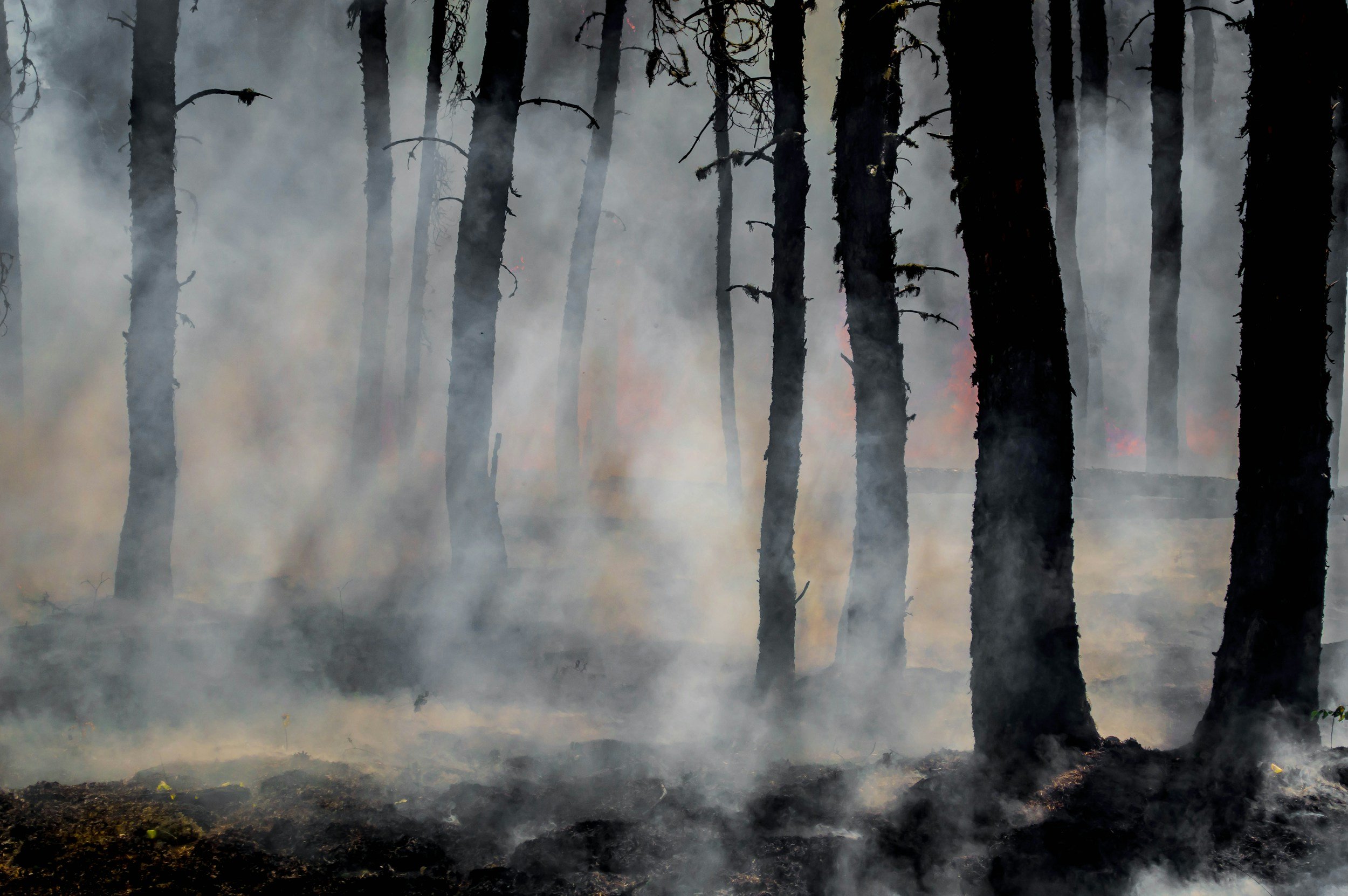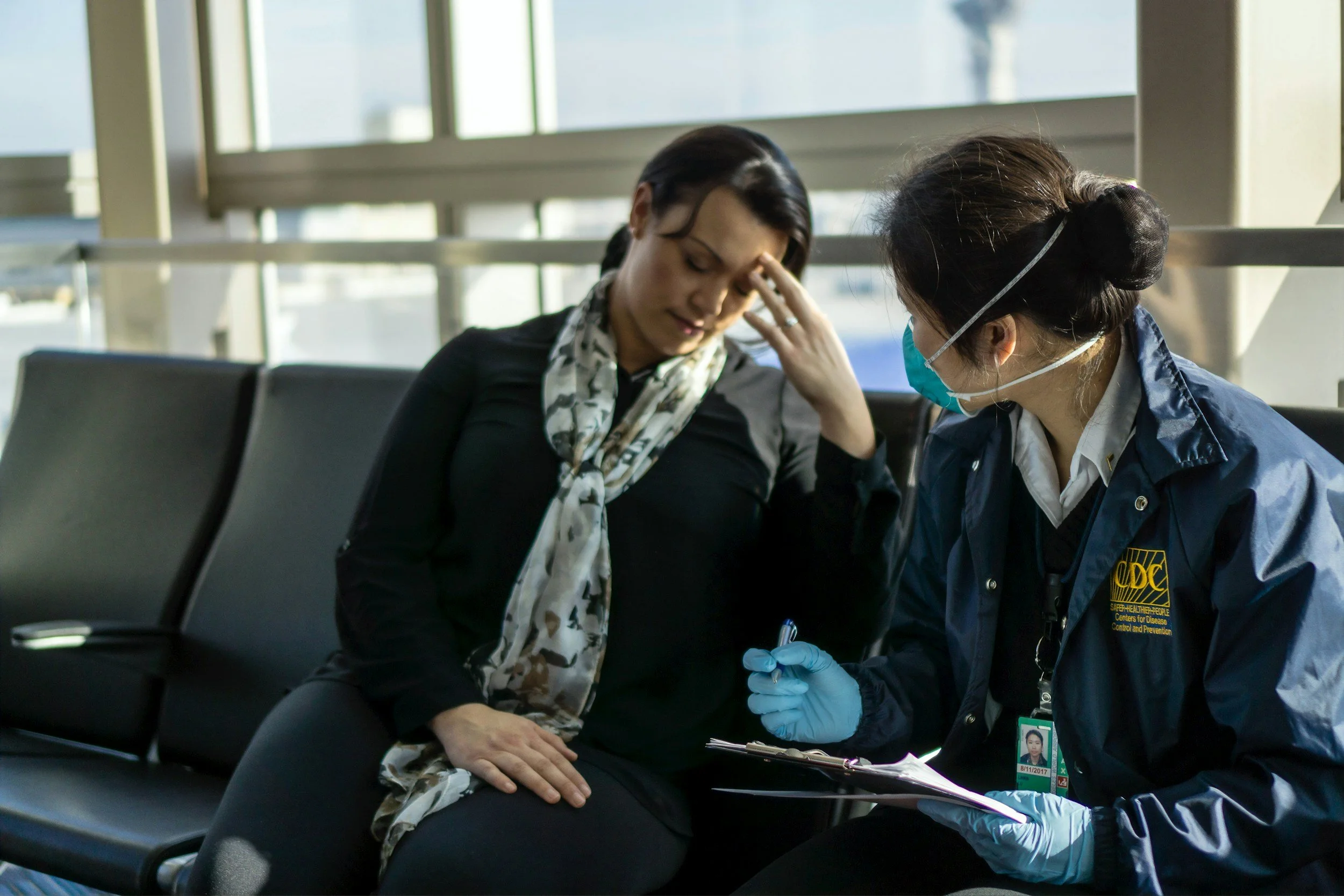
How Natural Disasters Affect Health Conditions and Healthcare Provision
Introduction
As already recognized by the World Health Organization, climate change leads to more frequent and intensifying weather and climate events including storms, extreme heat, floods, droughts, and wildfires. Health risks are disproportionately felt by the most vulnerable and disadvantaged, including women, children, ethnic minorities, poor communities, migrants or displaced persons, older populations, and those with underlying health conditions (1), such as a chronic disease or disability.
Possible immediate health-related consequences of disasters include injuries, acute mental and physical illnesses, collapse of health care infrastructures, destroyed infrastructure for waste disposal and sanitation, shortage and/or poor quality of water, and loss or critical reduction of food production supply leading to food shortages. Furthermore, potential delayed health outcomes could be related to infectious disease exposure, acute malnutrition, poor personal hygiene caused by poor housing, mental disorders, and exacerbation of chronic diseases (2).
Natural Disasters and Communicable Diseases
Natural disasters can significantly increase the risk of contracting contagious diseases, creating a secondary public health crisis in the aftermath of events like earthquakes, floods, or hurricanes. For instance, earthquakes are often associated with outbreaks of respiratory diseases caused by biological factors, including upper respiratory infections, pneumonia, influenza type A, and Coccidioidomycosis-induced lung infections, a fungal disease endemic to regions like South America and Mexico. These outbreaks are primarily driven by the conditions that emerge in disaster-affected areas, such as inadequate physical distancing, overcrowding in temporary shelters or camps, and insufficient or inappropriate ventilation in confined spaces. Cases of gastroenteritis, diarrheal diseases, respiratory infections, yellow fever, urinary tract infections, parasitic conditions, and Dengue fever have also been reported in the aftermath of hurricanes and typhoons. The movement of dust and dirt particles, along with extended exposure to these elements, can be considered significant risk factors for the development of such illnesses (3).
Weather-related events, such as cyclones, hurricanes, and floods, can significantly impact vector breeding grounds and the transmission of vector-borne diseases.
Although initial flooding may eliminate existing mosquito breeding sites, stagnant water resulting from heavy rainfall or river overflow can create new breeding environments. This can lead to a rise in vector populations and an increased risk of disease transmission, depending on the local mosquito species and their preferred habitats. Therefore, malaria outbreaks following flooding are a well-documented event. Another example is leptospirosis, a zoonotic bacterial infection with epidemic potential, often spread through direct contact with contaminated water. Rodents excrete large quantities of leptospires in their urine, and transmission may occur when a person comes into contact with water, vegetation, or mud tainted with rodent urine. Consequently, flooding exacerbates the spread of the bacteria due to increased rodent populations and closer proximity between rodents and humans in shared areas (4).
Additionally, floods can severely hinder preventive hygiene practices, such as handwashing after using the toilet or before eating, due to the lack of clean water and sanitation facilities. Biological contamination of food is also a significant concern, as floodwaters can spoil food supplies or introduce pathogens into the food chain (3).
Natural Disasters and Mental Health
Alongside the social and economic losses caused by natural disasters, individuals and communities often experience significant mental instability, which can lead to severe psychological conditions such as Post-Traumatic Stress Disorder (PTSD), anxiety, and depression. The trauma of losing resources, homes, and livelihoods, combined with the disruption of daily routines and the inability to regain control over one’s possessions, may create a sense of helplessness and despair. This is further compounded by the loss of social support networks, as communities are often fragmented during evacuations or relocations. Research has shown that these factors contribute to elevated levels of acute psychological distress following traumatic events like hurricanes and over time, this distress can manifest in various psychological symptoms, including severe and uncontrollable stress, persistent feelings of grief and sadness, and difficulty coping with the aftermath of the disasters (5). These mental health challenges can result in increased community conflicts, social isolation, and a diminished capacity to rebuild and recover, and addressing these psychological impacts requires comprehensive mental health support, including counseling, community-based interventions, and long-term strategies to restore a sense of stability and resilience among affected populations.
Mental health issues observed during disasters can be categorized into two phases: the acute phase (1-3 months) and the long-term phase (beyond 3 months). Most reactions and disorders in the acute phase tend to resolve on their own, while those in the long-term phase often necessitate intervention from mental health professionals. In addition to diagnosable mental health conditions, a significant portion of the affected population may experience subsyndromal symptoms (symptoms that do not meet full diagnostic criteria). Moreover, some mental health challenges often persist within disaster-affected communities, even 3 to 5 years after the event (6).
Stress related to a shocking event can also trigger other health-damaging effects. In a study conducted after the Northridge earthquake in Los Angeles, the results showed that the event served as a notable catalyst for sudden cardiac-related deaths, even in the absence of physical exertion. This observation, combined with the unusually low occurrence of such fatalities in the week following the earthquake, indicated that emotional stress may act as a key factor in triggering cardiac events among individuals already predisposed to such conditions. The findings highlight the profound impact of psychological stress on cardiovascular health, particularly in vulnerable populations, and underscores the importance of addressing emotional well-being and providing support to at-risk individuals during and after traumatic events to mitigate the risk of stress-induced health complications (7).
Natural Disasters and Disability
People who have mobility issues or other disabilities often face significant challenges in responding to emergencies, making them particularly vulnerable during disasters. Their physical limitations can hinder their ability to relocate quickly out of perilous situations, such as floods, wildfires, or hurricanes, or may be abandoned in a rushed evacuation, as occurred during Hurricane Katrina in the US. Beyond mobility, disabilities can also affect how people access critical information and resources necessary for disaster preparedness and response (8). For instance, those with visual or hearing impairments may struggle to receive emergency alerts, while individuals with cognitive disabilities may find it difficult to interpret complex instructions or navigate evacuation procedures. These barriers can delay their ability to prepare for, manage, and adapt to disaster and climate-related health risks in a timely manner. As a result, people with disabilities are disproportionately affected by the impacts of climate change and disasters, highlighting the urgent need for inclusive emergency planning, accessible communication systems, and targeted support to ensure their safety and well-being.
Natural Disasters and Chronic Diseases
The environmental and social circumstances that follow a disaster can also affect people with a pre-existing medical condition or chronic disease, often by exacerbating some symptoms related to these conditions. For example, in the case of people suffering from asthma, there is scientific evidence that suggests that extreme weather events may increase the risk of acute exacerbation of asthma, especially in children and women (9). In some cases, this aggravation is known as Thunderstorm Asthma, due to the increase of acute asthma attacks after these events, in part as a result of the exposure to pollen and other air particles (10). Similarly, these climate events can also affect people living with COPD and other chronic lung diseases (11,12).
Some other conditions developed as a consequence of a disaster, such as physical and mental stress, can trigger risk factors for the health and the life of people with other chronic diseases. In a study conducted after Hurricane Katrina in the U.S, results indicated that people with hypertension that were also suffering from PTSD as an aftermath of the hurricane, had a 70% higher risk of experience an incident cardiovascular event, like stroke or congestive heart failure, than their counterparts that weren’t suffering this stress (13). Other studies also indicate that blood pressure (BP) increases in the people with chronic diseases such as renal failure or other chronic health conditions like insomnia (14).
Regarding the outcomes of extreme climatic events can have on diabetes, studies show that these catastrophes can produce long-lasting effects. Evidence suggests that even 37 years after exposure, stress remains a risk factor for diabetes and can worsen its symptoms, particularly among women. Acute stress responses often result in a temporary rise in blood glucose levels in higher organisms. However, prolonged exposure to psychological stress can contribute to the development and progression of diabetes over time. Furthermore, the interplay between chronic stress and diabetes is complex. Stress hormones, such as cortisol, can disrupt insulin sensitivity and glucose regulation, exacerbating the challenges of managing diabetes. In disaster-affected populations, limited access to healthcare, disrupted routines, and emotional trauma can further compound these issues (15).
Natural Disasters and Health Care Assistance
Natural disasters can also severely damage essential infrastructure, including healthcare facilities, making it challenging to deliver care to those affected. In the wake of such events, power outages, water shortages, road damage, and communication breakdowns often occur, significantly disrupting healthcare services (16). These obstacles can delay emergency responses, restrict access to vital medications and treatments, and hinder the coordination of relief efforts, leaving healthcare providers struggling to offer timely and effective care.
For people with chronic health conditions, lack of access to regular medications and treatments can lead to a worsening of their conditions. For example, a person with diabetes may not have access to insulin or the supplies needed to control their blood sugar levels, which can result in serious and even life-threatening complications.
Beyond the logistical challenges, healthcare workers frequently face overwhelming physical and emotional stress during and after disasters. They often work long hours under intense pressure and with limited resources, leading to burnout and exhaustion. This fatigue can impair their ability to provide quality care, potentially worsening outcomes for patients. Additionally, healthcare workers are not spared from the personal impacts of disasters, as many may experience the loss of homes, family members, or community support themselves. These personal hardships can add to their stress, further affecting their professional performance and overall well-being (16).
Conclusion
In summary, natural disasters present complex and far-reaching challenges to both public health and healthcare systems, with consequences that persist well beyond the initial event. The growing frequency and severity of these disasters, largely fueled by climate change, disproportionately impacts vulnerable groups, such as individuals with chronic illnesses, disabilities, and those with a lack of access to essential resources. The health consequences are extensive, encompassing not only immediate physical injuries and infectious disease outbreaks but also long-term psychological distress and the worsening of pre-existing medical conditions.
Moreover, disasters often severely compromise healthcare infrastructure, disrupting the availability of essential medical services, medications, and emergency care. This strain extends to healthcare workers, who must operate under extreme conditions, facing both physical exhaustion and emotional trauma.
The compounded effects of these challenges underscore the urgent need for a multifaceted strategy that emphasizes proactive disaster preparedness, inclusive emergency response plans, robust mental health support, and the fortification of healthcare systems against future crises.
By focusing on equity in disaster response, ensuring that all the population receive adequate support, and fostering stronger community resilience, societies can better withstand the health impacts of natural disasters. Investments in early warning systems, coordinated emergency response frameworks, and sustainable healthcare policies will be critical in reducing both immediate and long-term health consequences and will help the development of more resilient communities capable of adapting to an increasingly unpredictable climate.
Take Action: Build a More Resilient Future
Natural disasters are becoming more frequent and severe, disproportionately affecting vulnerable communities and straining healthcare systems worldwide. But we are not powerless—we can act now to drive change.
Raise Awareness
Share this article and start conversations about the urgent health impacts of climate-related disasters.
Advocate for Change
Support policies that strengthen disaster preparedness, healthcare access, and climate resilience.
Get Involved
Join our movement, volunteer with response initiatives, or collaborate with organizations working on global health equity.
The time for action is now.
Together, we can ensure that communities are not just surviving disasters, but building resilience for the future.
By
Carme Aguilar and Mutile Mwongo
References
Climate change [Internet]. [cited 2024 Nov 8]. Available from: https://www.who.int/news-room/fact-sheets/detail/climate-change-and-health
Schreier NK. The influence of weather, season, climate and disasters on non-communicable diseases [Internet]. 2014 [cited 2024 Nov 8]. Available from: https://www.julkari.fi/handle/10024/116868
Saatchi M, Khankeh HR, Shojafard J, Barzanji A, Ranjbar M, Nazari N, et al. Communicable diseases outbreaks after natural disasters: A systematic scoping review for incidence, risk factors and recommendations. Prog Disaster Sci. 2024 Oct;23:100334.
Watson JT, Gayer M, Connolly MA. Epidemics after Natural Disasters. Emerg Infect Dis. 2007 Jan;13(1):1–5.
Makwana N. Disaster and its impact on mental health: A narrative review. J Fam Med Prim Care. 2019 Oct 31;8(10):3090.
Math SB, Nirmala MC, Moirangthem S, Kumar NC. Disaster Management: Mental Health Perspective. Indian J Psychol Med. 2015 Jul 1;37(3):261–71.
Leor J, Poole WK, Kloner RA. Sudden Cardiac Death Triggered by an Earthquake. N Engl J Med. 1996 Feb 15;334(7):413–9.
Engelman A, Craig L, Iles A. Global Disability Justice In Climate Disasters: Mobilizing People With Disabilities As Change Agents: Analysis describes disability justice in climate emergencies and disasters, mobilizing people with disabilities as change agents. Health Aff (Millwood). 2022 Oct 1;41(10):1496–504.
Makrufardi F, Manullang A, Rusmawatiningtyas D, Chung KF, Lin SC, Chuang HC. Extreme weather and asthma: a systematic review and meta-analysis. Eur Respir Rev. 2023 Jun 30;32(168):230019.
Taylor PE, Jonsson H. Thunderstorm asthma. Curr Allergy Asthma Rep. 2004 Sep;4(5):409–13.
Robinson B, Alatas MF, Robertson A, Steer H. Natural disasters and the lung. Respirology. 2011 Apr;16(3):386–95.
Gayle AV, Quint JK, Fuertes EI. Understanding the relationships between environmental factors and exacerbations of COPD. Expert Rev Respir Med. 2021 Jan 2;15(1):39–50.
Lenane Z, Peacock E, Joyce C, Frohlich ED, Re RN, Muntner P, et al. Association of Post-Traumatic Stress Disorder Symptoms Following Hurricane Katrina With Incident Cardiovascular Disease Events Among Older Adults With Hypertension. Am J Geriatr Psychiatry. 2019 Mar;27(3):310–21.
Babaie J, Pashaei asl Y, Naghipour B, Faridaalaee G. Cardiovascular Diseases in Natural Disasters; a Systematic Review: Cardiovascular Diseases in Disasters. Arch Acad Emerg Med. 2021 May 4;9(1):e36.
An C, Zhang Y, Yu L, Li N, Song M, Wang L, et al. Long-term impact of earthquake stress on fasting glucose control and diabetes prevalence among Chinese adults of Tangshan. Int J Clin Exp Med. 2014 Nov 15;7(11):4441.
Salam A, Wireko AA, Jiffry R, Ng JC, Patel H, Zahid MJ, et al. The impact of natural disasters on healthcare and surgical services in low- and middle-income countries. Ann Med Surg. 2023 Aug;85(8):3774.




